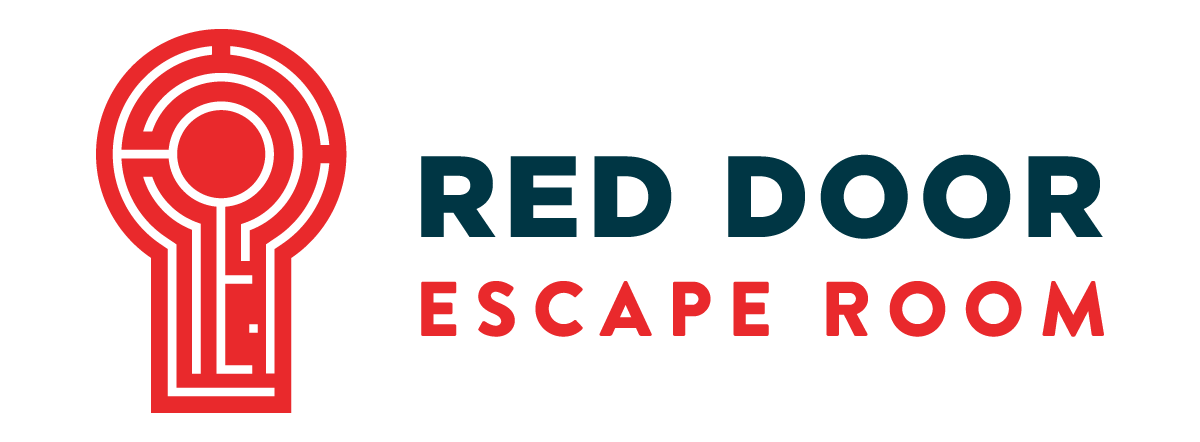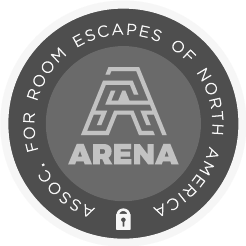Bring the excitement and experience of an escape room to your friends, family, or coworkers. You can create your own escape game at home, in the office, or any setting of your choice. In fact, that’s how Red Door Escape Room got started—in a church!
HERE IS HOW YOU CAN DESIGN YOUR OWN ESCAPE GAME:
1. CREATE YOUR SETTING AND THEME
Don’t just put players into a game—draw them into a new world. Escape room companies go to great lengths to decorate and theme their environments. But you can pull players into your setting in other ways. The narrative and story that you create elevates players’ imaginations and brings them into the scenario that you’ve created. Introducing characters or a backstory can set the vibe and help immerse the group before the game even starts.
The main objective of the game also plays a big role in setting the stage for the game. Are players trying to retrieve a lost item? Discover a secret? Stop a plot by an evil villain? Defining the objective for the group can determine whether the tone or vibe of the game is heroic, suspenseful, discovery, competitive, accomplishment, survival, etc.
2. DETERMINE HOW PLAYERS DISCOVER CLUES
Once you’ve landed on a theme, you can choose props and clues that fit into the scenario you’ve created. It’s helpful to ask yourself if there is a reason or purpose for the prop to be present according to your narrative. This helps you determine which items add to the immersion. Letters and numbers are commonly used in escape games, so you can think of items that typically have that info on them, such as clocks, books, maps, etc. Of course, a modern scenario dealing with everyday people and circumstances is easier to design since you can use items around the house or office. And for those who want to get imaginative and adventurous with their theme, you can find inspiration on Pinterest, escape room movies, or by doing a little research on the internet.
Clues can be hidden and searched for, or they can be given to players as they progress through the game by unlocking compartments or doors. Padlocks are a staple in escape games, and your local hardware store normally has a variety of them including number, letter, directional, or electronic padlocks. If you need to make a lockable compartment, hasps can be used if you’re willing to drill some small holes.
In order to let the players know what items or props are clues, you can specifically mark them so that they are easily identifiable as part of the game. For example, you can tie a bright red ribbon on or near the clues and let the group know beforehand that this is how they can identify clues in the game. You’ll also need to consider how you’ll deliver hints when players get stuck and need a nudge in the right direction.
3. DESIGN YOUR PUZZLES AND GAMEFLOW


It’s helpful to draw out a gameflow chart so that you can see the big picture of the how players will progress through your game. This can also allow you to make decisions about when players will find certain clues and can help you decide to layer a puzzle into pieces if you’d like. You can make the gameflow linear or have multiple paths to some solutions. Keep your players engaged by using a variety of puzzles. Here is a list of different types of puzzles that can help elevate any escape room experience:
- Searching for hidden objects
- Audio clue
- Pattern recognition
- Math
- Mirrors
- Riddles
- Communication
- Abstract logic (such as Sudoku)
- Word puzzles (such as word search or crosswords)
- Blacklight / Invisible ink
- Counting
- Symbol substitution with a key (such as looking up symbols on a chart)
- Finding objects within images
- Using something in an unusual way (outside-the-box thinking)
- Assembly of a physical object (like a jigsaw puzzle)
- Ciphers (such as letter substitution)
- Research using information sources
- Strategic thinking (such as chess)
- Ropes (such as undoing knots)
FINALLY, WATCH THE PLAYERS HAVE A GREAT TIME!
Escape games naturally foster social interaction, provide teams with a common goal, and draw out different personalities during the game. After you’ve designed and set up the game, enjoy watching your players bring the game to life as they play through. The whole experience is sure to be talked about long after they’ve finished playing!


